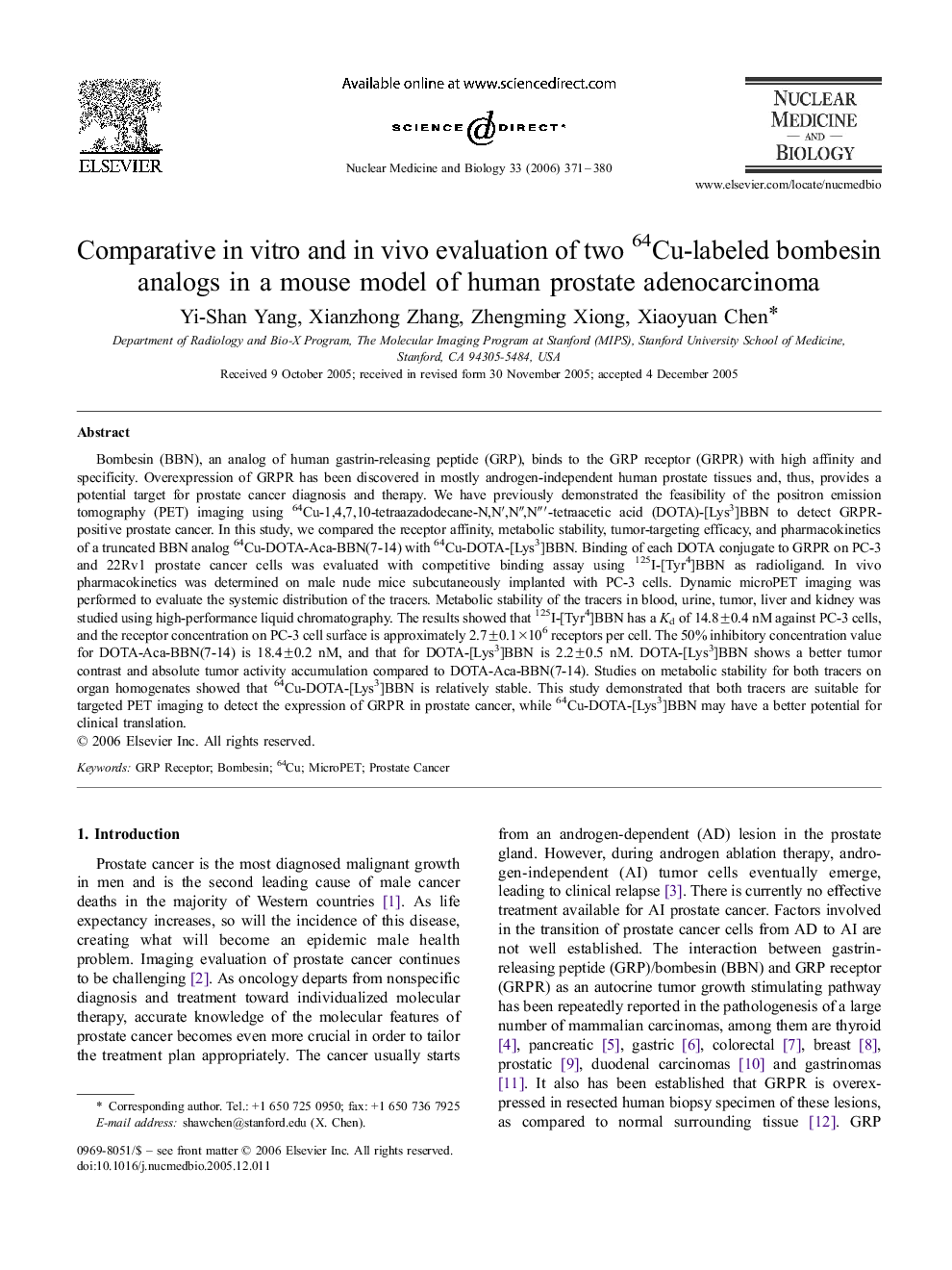| Article ID | Journal | Published Year | Pages | File Type |
|---|---|---|---|---|
| 2154865 | Nuclear Medicine and Biology | 2006 | 10 Pages |
Abstract
Bombesin (BBN), an analog of human gastrin-releasing peptide (GRP), binds to the GRP receptor (GRPR) with high affinity and specificity. Overexpression of GRPR has been discovered in mostly androgen-independent human prostate tissues and, thus, provides a potential target for prostate cancer diagnosis and therapy. We have previously demonstrated the feasibility of the positron emission tomography (PET) imaging using 64Cu-1,4,7,10-tetraazadodecane-N,Nâ²,Nâ³,Nâ³â²-tetraacetic acid (DOTA)-[Lys3]BBN to detect GRPR-positive prostate cancer. In this study, we compared the receptor affinity, metabolic stability, tumor-targeting efficacy, and pharmacokinetics of a truncated BBN analog 64Cu-DOTA-Aca-BBN(7-14) with 64Cu-DOTA-[Lys3]BBN. Binding of each DOTA conjugate to GRPR on PC-3 and 22Rv1 prostate cancer cells was evaluated with competitive binding assay using 125I-[Tyr4]BBN as radioligand. In vivo pharmacokinetics was determined on male nude mice subcutaneously implanted with PC-3 cells. Dynamic microPET imaging was performed to evaluate the systemic distribution of the tracers. Metabolic stability of the tracers in blood, urine, tumor, liver and kidney was studied using high-performance liquid chromatography. The results showed that 125I-[Tyr4]BBN has a Kd of 14.8±0.4 nM against PC-3 cells, and the receptor concentration on PC-3 cell surface is approximately 2.7±0.1Ã106 receptors per cell. The 50% inhibitory concentration value for DOTA-Aca-BBN(7-14) is 18.4±0.2 nM, and that for DOTA-[Lys3]BBN is 2.2±0.5 nM. DOTA-[Lys3]BBN shows a better tumor contrast and absolute tumor activity accumulation compared to DOTA-Aca-BBN(7-14). Studies on metabolic stability for both tracers on organ homogenates showed that 64Cu-DOTA-[Lys3]BBN is relatively stable. This study demonstrated that both tracers are suitable for targeted PET imaging to detect the expression of GRPR in prostate cancer, while 64Cu-DOTA-[Lys3]BBN may have a better potential for clinical translation.
Related Topics
Life Sciences
Biochemistry, Genetics and Molecular Biology
Cancer Research
Authors
Yi-Shan Yang, Xianzhong Zhang, Zhengming Xiong, Xiaoyuan Chen,
